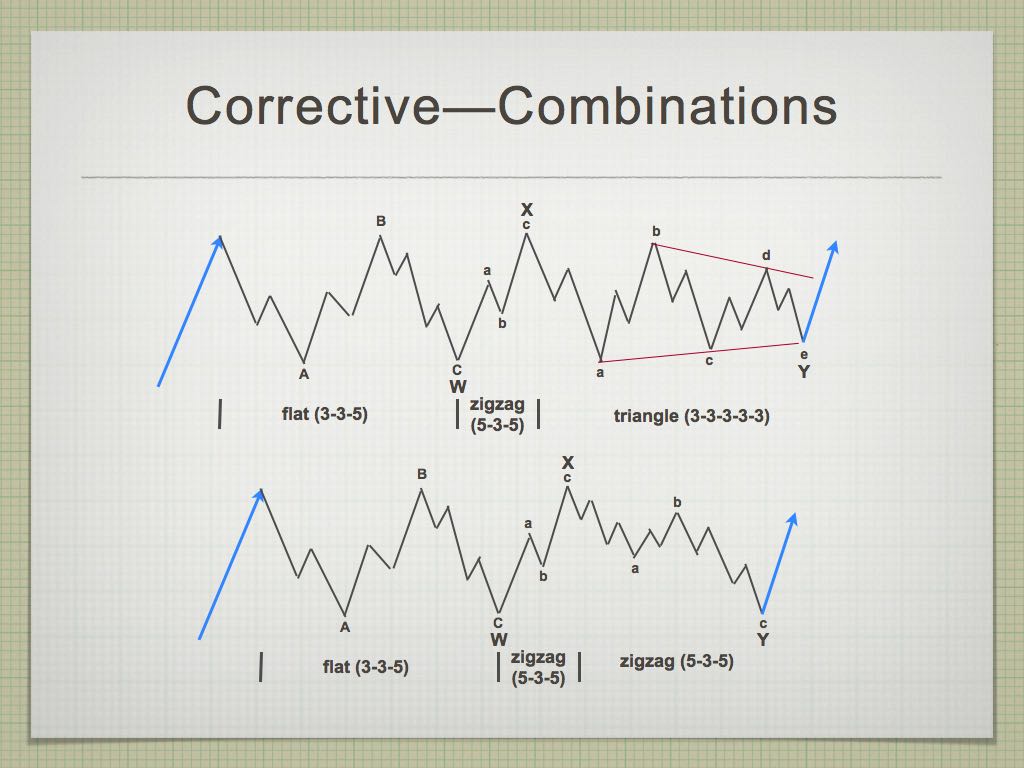
Combinations are simply combinations of the key corrective waves. If the combination contains a triangle, it’s always the final pattern.
Rules (these are “hard” rules; they cannot be broken)
- Combinations comprise two (or three) corrective patterns separated by one (or two) corrective pattern(s) in the opposite direction, labeled X. (The first corrective pattem is labeled W, the second Y, and the third, if there is one, Z.)
- A zigzag combination comprises two or three zigzags (in which case it is called a double or triple zigzag).
- A “double three” flat combination comprises (in order the order listed within each pair) a zigzag and a flat, a flat and a zigzag, a flat and a flat, a zigzag and a triangle, or a flat and a triangle.
- A rare “triple three” flat combination comprises three flats.
- Double and triple zigzags can take the place of zigzags. and double and triple threes can take the place of flats and triangles.
- An expanding triangle has yet to be observed as a component of a combination.
Guidelines (guidelines can be broken but it’s rare that they are)
- When a zigzag or flat appears too small to be the entire wave with respect to the preceding wave (or, if it is to be wave 4, the preceding wave 2). a combination is likely.



